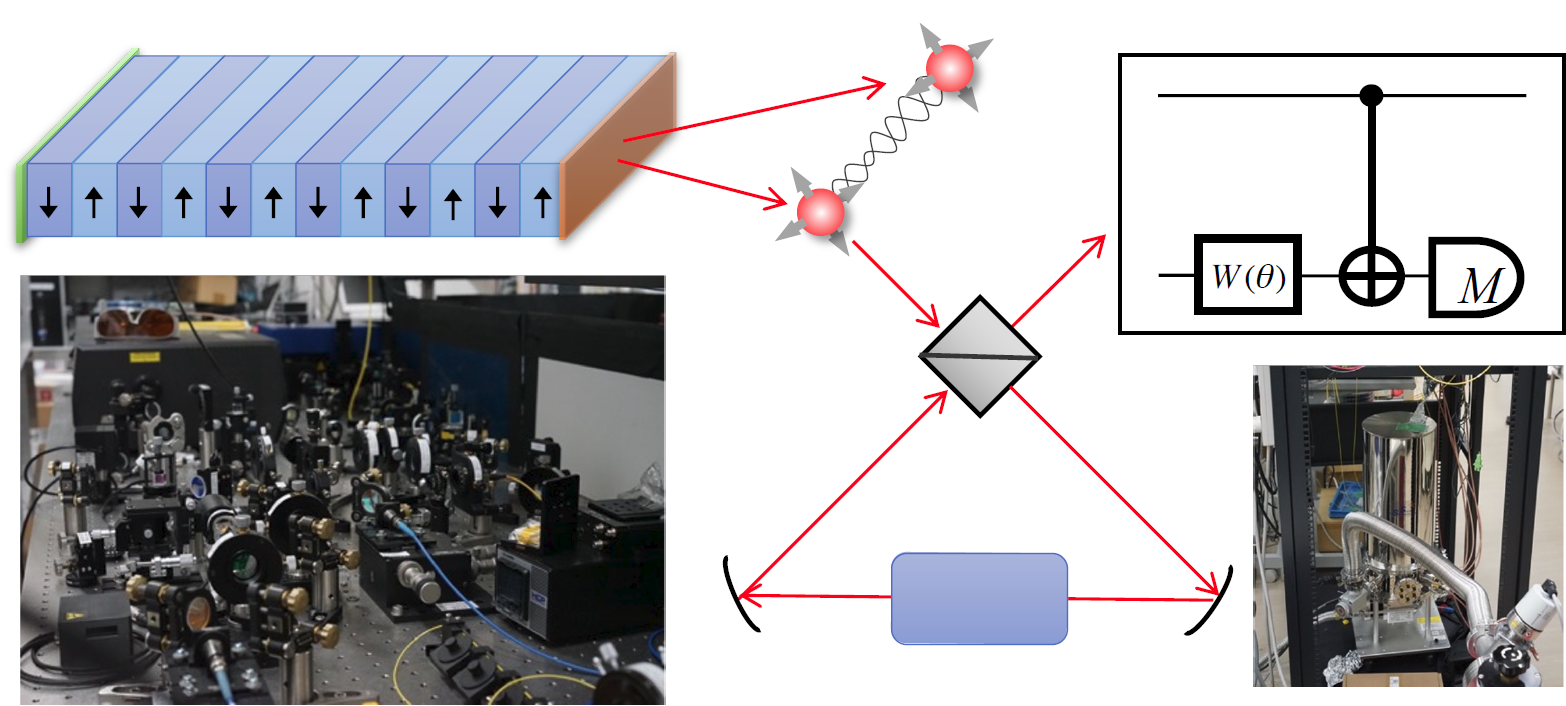We conduct experimental research in quantum optics and quantum technologies using photons, quantum particles of light.
The concept of the photon is essential for understanding quantum phenomena such as black-body radiation and the photo-electric effect. In experimental studies, photons are an excellent tool to explore the quantum world due to their stability in an ordinary lab environment. They are also expected to play a significant role in quantum technologies including quantum computing, quantum cryptography, and quantum metrology.
Our primary goal is to gain an understanding of counter-intuitive quantum phenomena such as quantum entanglement and quantum fluctuations, and to apply them to the development of new quantum technologies. Our ongoing projects involve nonlinear optics with single photons, observing novel multi-photon interference, generating and detecting large-scale photonic entanglement, developing optical quantum gates, and precision quantum optical measurement and networking.

Our group studies generation, manipulation, measurement, and application of photons and their entanglement.